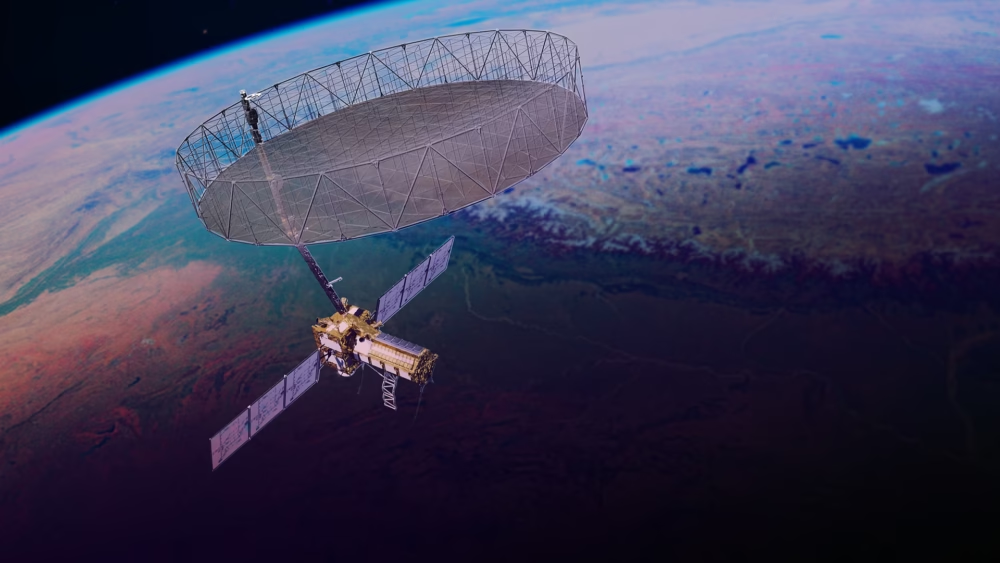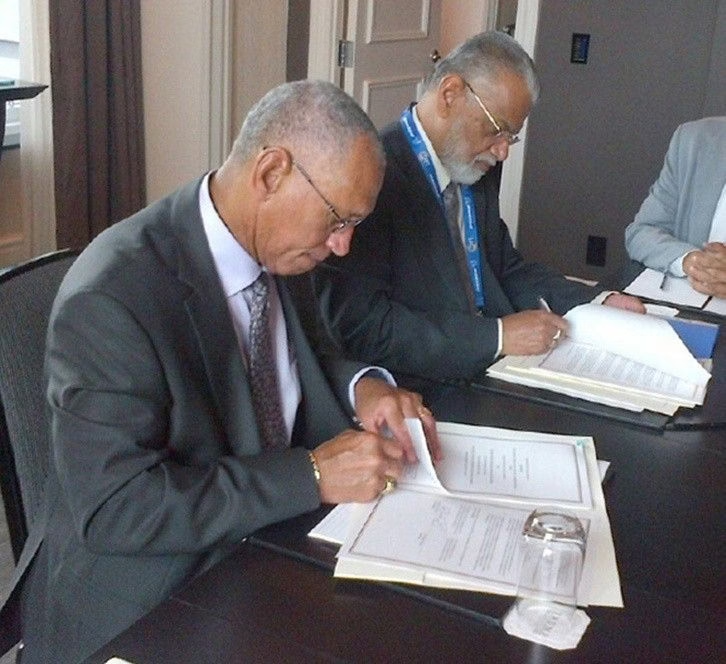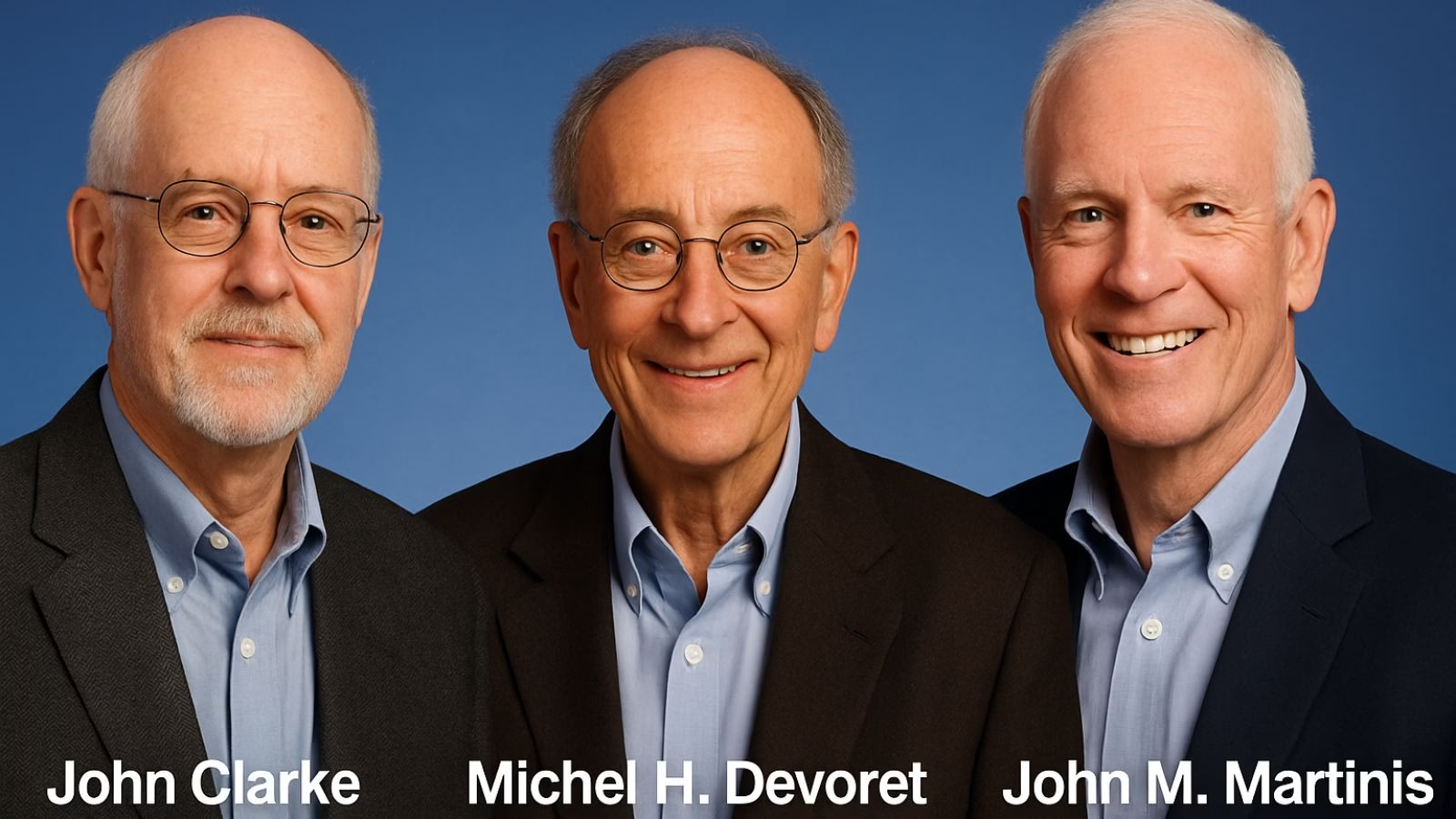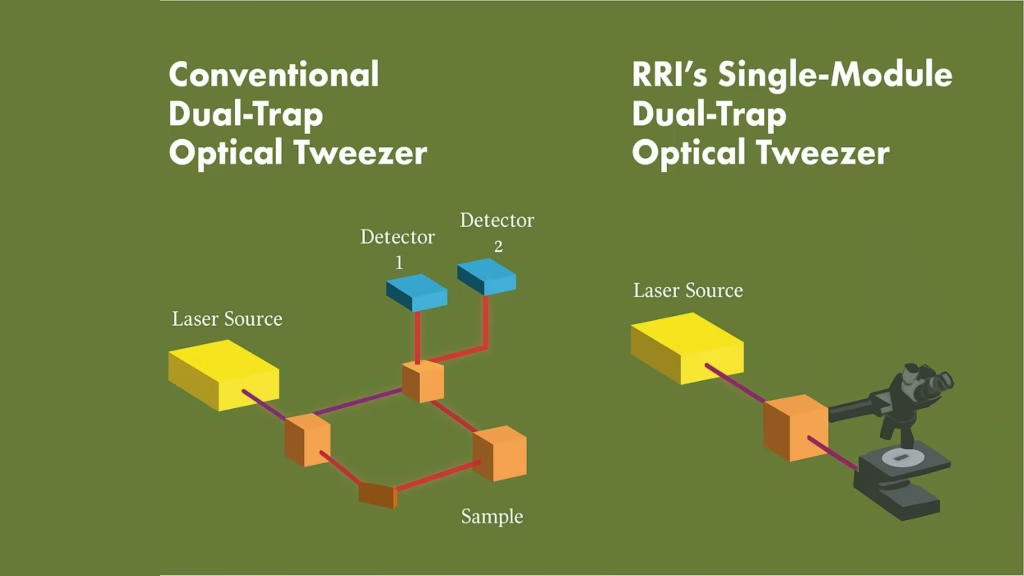Space & Physics
Joint NASA-ISRO radar satellite is the most powerful built to date
NISAR – a portmanteau for the NASA-ISRO synthetic aperture global radar earth observation satellite — will only be the latest collaboration between the two space agencies.

On July 30th, NISAR — the NASA-ISRO joint space mission — launched to space aboard the GSLV Mark II rocket from Sriharikota, Andhra Pradesh. The satellite, now safely tucked into a sun-synchronous orbit around earth, will enter a commissioning phase over the next three months, to deploy all its instruments.
Perched at an altitude of 750 km, the three ton satellite will complete an orbit around the earth every 12 days, while studying the planet’s diverse geology with unprecedented detail.
NISAR, a portmanteau for the NASA-ISRO synthetic aperture radar mission, marks the culmination of a decade-long effort to build the most powerful earth observation satellite to date.
In 2007, NASA had begun actively exploring an ambitious undertaking to build a satellite, which could map the earth and the whole ecosystem. On the agenda were investigations into studying climate change and its role in exacerbating extreme weather events. These include surveillance over vulnerable hotspots, such as Greenland and Antarctica, where disappearing ice sheets have been linked to the global average increase in sea-levels over the years.
Remote sensing satellites traditionally used can’t capture the full picture, without uninterrupted sunlight exposure or obstructions namely cloud cover. But synthetic aperture radar is a fix to these problems. Clouds are transparent to radio and microwaves unlike visible light. As such, a synthetic aperture radar can work across any weather, whether sunlit or not alike.
That said, SAR technology isn’t new. They have been around for about seventy years, since the first proof of principle was proven in the 1950s. In 1978, the US launched the first SAR-equipped earth observation satellite, Seasat, to monitor oceans. Neither Seasat or for that matter any SAR-based successors, could bear resolutions as high as 1 cm, or map terrain across a swath area as wide as about 240 km, as NISAR can.
NASA engaged in a cost-effective strategy, opening doors for international partners to pool resources, and co-develop the satellite and the scientific campaigns.

A

B
(A) Melt pond in Greenland | Photo Credit: Michael Studinger (2008) (B) NASA administrator Charles Bolden and ISRO chairman K. Radhakrishnan sign documents, which included a charter on NISAR, in Toronto | Photo Credit: NASA (2014)
NASA and ISRO share expertise
NASA found an interested party in ISRO, which at the time was developing the Radar Imaging Satellite (RISAT), which had a smaller scope to study India’s geology. India, being especially vulnerable to floods, landslides and cyclones, couldn’t overlook the incentives an extra eye in the sky could provide.
NISAR can track and relay even the minutest of changes on the surface in near real-time. In principle, the satellite should detect a flooded area hidden from view to rescuers on-ground, or even traditional remote sensing satellites which use passive receivers. The satellite can serve a key role in an integrated multi-hazard early warning system.
In 2014, ISRO inked the NISAR agreement with NASA. The mission would only be their latest collaboration between the two space agencies. Previously, they had collaborated on 2008’s Chandrayaan-1. Back then, NASA’s Moon Mineralogy Mapper (M3) instrument and miniSAR radar onboard the Chandrayaan orbiter, led the famous detection of water ice on the moon.
Although NISAR was originally slated for launch in 2020, innumerable delays followed as they sorted technical challenges, and the abrupt global lockdown amid COVID pandemic.
Upon project completion last year, NISAR had become the most expensive satellite built, with NASA and ISRO pouring some $1.5 billion into development. The costs were unevenly split between them; with NASA spending some $1.3 billion, and ISRO bearing a modest amount at $91 million.
But a white paper details ISRO had contributed an equal value in engineering various components, re-establishing parity. ISRO engineered the spacecraft body, readied tracking stations on-ground, and developed the short wavelength S-band radar. The S-band (at 12 cm) complements NASA’s longer wavelength L-band (24 cm) radar.
The L-band can track changes under thick foliage or leaves, under forests. It can even measure land deformation rates as tiny as 4 mm/year. While the L-band serves as NISAR’s primary means of acquiring radar data, ISRO’s S-band radar will help provide details that concern Indian earth scientists, monitoring coastal erosion for example. Both radars work in tandem with NASA-designed radar receiver and reflector – a 12-meter wide meshed net, resembling a canopy attached to the spacecraft body via a boom.
Three months from now, once the commissioning phase is complete, NISAR will begin its observational runs, and beam radar data back to earth continuously. The National Remote Sensing Centre in Hyderabad, and Goddard Space Flight Centre in Maryland, will process the respective L & S-band data independently, and archive them online for the world to see, all in a matter of few hours.
Space & Physics
Nobel Prize in Physics: Clarke, Devoret, and Martinis Honoured for Pioneering Quantum Discoveries
The 2025 Nobel Prize in Physics honours John Clarke, Michel H. Devoret, and John M. Martinis for revealing how entire electrical circuits can display quantum behaviour — a discovery that paved the way for modern quantum computing.

The 2025 Nobel Prize in Physics has been awarded to John Clarke, Michel H. Devoret, and John M. Martinis for their landmark discovery of macroscopic quantum mechanical tunnelling and energy quantisation in an electric circuit, an innovation that laid the foundation for today’s quantum computing revolution.
Announcing the prize, Olle Eriksson, Chair of the Nobel Committee for Physics, said, “It is wonderful to be able to celebrate the way that century-old quantum mechanics continually offers new surprises. It is also enormously useful, as quantum mechanics is the foundation of all digital technology.”
The Committee described their discovery as a “turning point in understanding how quantum mechanics manifests at the macroscopic scale,” bridging the gap between classical electronics and quantum physics.
John Clarke: The SQUID Pioneer
British-born John Clarke, Professor Emeritus at the University of California, Berkeley, is celebrated for his pioneering work on Superconducting Quantum Interference Devices (SQUIDs) — ultra-sensitive detectors of magnetic flux. His career has been marked by contributions that span superconductivity, quantum amplifiers, and precision measurements.
Clarke’s experiments in the early 1980s provided the first clear evidence of quantum behaviour in electrical circuits — showing that entire electrical systems, not just atoms or photons, can obey the strange laws of quantum mechanics.
A Fellow of the Royal Society, Clarke has been honoured with numerous awards including the Comstock Prize (1999) and the Hughes Medal (2004).
Michel H. Devoret: Architect of Quantum Circuits
French physicist Michel H. Devoret, now the Frederick W. Beinecke Professor Emeritus of Applied Physics at Yale University, has been one of the intellectual architects of quantronics — the study of quantum phenomena in electrical circuits.
After earning his PhD at the University of Paris-Sud and completing a postdoctoral fellowship under Clarke at Berkeley, Devoret helped establish the field of circuit quantum electrodynamics (cQED), which underpins the design of modern superconducting qubits.
His group’s innovations — from the single-electron pump to the fluxonium qubit — have set performance benchmarks in quantum coherence and control. Devoret is also a recipient of the Fritz London Memorial Prize (2014) and the John Stewart Bell Prize, and is a member of the French Academy of Sciences.
John M. Martinis: Building the Quantum Processor
American physicist John M. Martinis, who completed his PhD at UC Berkeley under Clarke’s supervision, translated these quantum principles into the hardware era. His experiments demonstrated energy level quantisation in Josephson junctions, one of the key results now honoured by the Nobel Committee.
Martinis later led Google’s Quantum AI lab, where his team in 2019 achieved the world’s first demonstration of quantum supremacy — showing a superconducting processor outperforming the fastest classical supercomputer on a specific task.
A former professor at UC Santa Barbara, Martinis continues to be a leading voice in quantum computing research and technology development.
A Legacy of Quantum Insight
Together, the trio’s discovery, once seen as a niche curiosity in superconducting circuits, has become the cornerstone of the global quantum revolution. Their experiments proved that macroscopic electrical systems can display quantised energy states and tunnel between them, much like subatomic particles.
Their work, as the Nobel citation puts it, “opened a new window into the quantum behaviour of engineered systems, enabling technologies that are redefining computation, communication, and sensing.”
Space & Physics
The Tiny Grip That Could Reshape Medicine: India’s Dual-Trap Optical Tweezer
Indian scientists build new optical tweezer module—set to transform single-molecule research and medical Innovation

In an inventive leap that could open up new frontiers in neuroscience, drug development, and medical research, scientists in India have designed their own version of a precision laboratory tool known as the dual-trap optical tweezers system. By creating a homegrown solution to manipulate and measure forces on single molecules, the team brings world-class technology within reach of Indian researchers—potentially igniting a wave of scientific discoveries.
Optical tweezers, a Nobel Prize-winning invention from 2018, use focused beams of light to grab and move microscopic objects with extraordinary accuracy. The technique has become indispensable for measuring tiny forces and exploring the mechanics of DNA, proteins, living cells, and engineered nanomaterials. Yet, decades after their invention, conventional optical tweezers systems sometimes fall short for today’s most challenging experiments.
Researchers at the Raman Research Institute (RRI), an autonomous institute backed by India’s Department of Science and Technology in Bengaluru, have now introduced a smart upgrade that addresses long-standing pitfalls of dual-trap tweezers. Traditional setups rely on measuring the light that passes through particles trapped in two separate beams—a method prone to signal “cross-talk.” This makes simultaneous, independent measurement difficult, diminishing both accuracy and versatility.

The new system pioneers a confocal detection scheme. In a media statement, Md Arsalan Ashraf, a doctoral scholar at RRI, explained, “The unique optical trapping scheme utilizes laser light scattered back by the sample for detecting trapped particle position. This technique pushes past some of the long-standing constraints of dual-trap configurations and removes signal interference. The single-module design integrates effortlessly with standard microscopy frameworks,” he said.
The refinement doesn’t end there. The system ensures that detectors tracking tiny particles remain perfectly aligned, even when the optical traps themselves move. The result: two stable, reliable measurement channels, zero interference, and no need for complicated re-adjustment mid-experiment—a frequent headache with older systems.
Traditional dual-trap designs have required costly and complex add-ons, sometimes even hijacking the features of laboratory microscopes and making additional techniques, such as phase contrast or fluorescence imaging, hard to use. “This new single-module trapping and detection design makes high-precision force measurement studies of single molecules, probing of soft materials including biological samples, and micromanipulation of biological samples like cells much more convenient and cost-effective,” said Pramod A Pullarkat, lead principal investigator at RRI, in a statement.
By removing cross-talk and offering robust stability—whether traps are close together, displaced, or the environment changes—the RRI team’s approach is not only easier to use but far more adaptable. Its plug-and-play module fits onto standard microscopes without overhauling their basic structure.
From the intellectual property point of view, this design may be a game-changer. By cracking the persistent problem of signal interference with minimalist engineering, the new setup enhances measurement precision and reliability—essential advantages for researchers performing delicate biophysical experiments on everything from molecular motors to living cells.
With the essential building blocks in place, the RRI team is now exploring commercial avenues to produce and distribute their single-module, dual-trap optical tweezer system as an affordable add-on for existing microscopes. The innovation stands to put advanced single-molecule force spectroscopy, long limited to wealthier labs abroad, into the hands of scientists across India—and perhaps spark breakthroughs across the biomedical sciences.
Space & Physics
New Magnetic Transistor Breakthrough May Revolutionize Electronics
A team of MIT physicists has created a magnetic transistor that could make future electronics smaller, faster, and more energy-efficient. By swapping silicon for a new magnetic semiconductor, they’ve opened the door to game-changing advancements in computing.

For decades, silicon has been the undisputed workhorse in transistors—the microscopic switches responsible for processing information in every phone, computer, and high-tech device. But silicon’s physical limits have long frustrated scientists seeking ever-smaller, more efficient electronics.
Now, MIT researchers have unveiled a major advance: they’ve replaced silicon with a magnetic semiconductor, introducing magnetism into transistors in a way that promises tighter, smarter, and more energy-saving circuits. This new ingredient, chromium sulfur bromide, makes it possible to control electricity flow with far greater efficiency and could even allow each transistor to “remember” information, simplifying circuit design for future chips.
“This lack of contamination enables their device to outperform existing magnetic transistors. Most others can only create a weak magnetic effect, changing the flow of current by a few percent or less. Their new transistor can switch or amplify the electric current by a factor of 10,” the MIT team said in a media statement. Their work, detailed in Physical Review Letters, outlines how this material’s stability and clean switching between magnetic states unlocks a new degree of control.
Chung-Tao Chou, MIT graduate student and co-lead author, explains in a media statement, “People have known about magnets for thousands of years, but there are very limited ways to incorporate magnetism into electronics. We have shown a new way to efficiently utilize magnetism that opens up a lot of possibilities for future applications and research.”
The device’s game-changing aspect is its ability to combine the roles of memory cell and transistor, allowing electronics to read and store information faster and more reliably. “Now, not only are transistors turning on and off, they are also remembering information. And because we can switch the transistor with greater magnitude, the signal is much stronger so we can read out the information faster, and in a much more reliable way,” said Luqiao Liu, MIT associate professor, in a media statement.
Moving forward, the team is looking to scale up their clean manufacturing process, hoping to create arrays of these magnetic transistors for broader commercial and scientific use. If successful, the innovation could usher in a new era of spintronic devices, where magnetism becomes as central to electronics as silicon is today.
-

 Space & Physics5 months ago
Space & Physics5 months agoIs Time Travel Possible? Exploring the Science Behind the Concept
-

 Earth6 months ago
Earth6 months ago122 Forests, 3.2 Million Trees: How One Man Built the World’s Largest Miyawaki Forest
-

 Space & Physics6 months ago
Space & Physics6 months agoDid JWST detect “signs of life” in an alien planet?
-

 Know The Scientist5 months ago
Know The Scientist5 months agoNarlikar – the rare Indian scientist who penned short stories
-

 Society4 months ago
Society4 months agoShukla is now India’s first astronaut in decades to visit outer space
-

 Society4 months ago
Society4 months agoAxiom-4 will see an Indian astronaut depart for outer space after 41 years
-

 Earth4 months ago
Earth4 months agoWorld Environment Day 2025: “Beating plastic pollution”
-

 Society6 months ago
Society6 months agoRabies, Bites, and Policy Gaps: One Woman’s Humane Fight for Kerala’s Stray Dogs






















